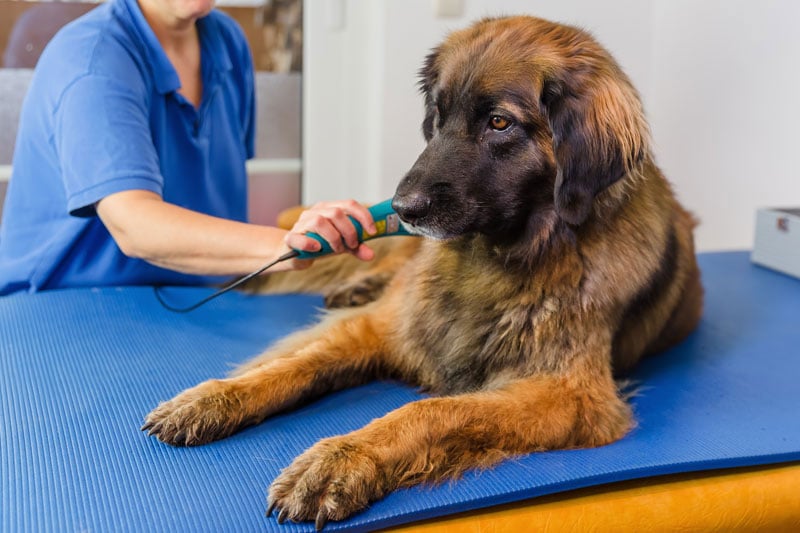Benefits of Laser Therapy for Dogs

Although laser therapy has been available for 40 years, evidence to support its use for alleviating pain and accelerating healing has only recently emerged. As more studies have been carried out, interest in therapeutic laser for treating various conditions has grown dramatically. Many other health issues have also responded positively to laser therapy. Therapeutic laser is used to treat a myriad of conditions, including osteoarthritis, lick granuloma, cellulitis, and others, in dogs. Although most often used as a treatment for musculoskeletal pain, laser therapy can also help:
- Surgical wound healing
- Traumatic wound healing
- Increase the metabolism of specific tissues
- Reduce the formation of scar tissue
- Improve nerve function and nerve regeneration
- Release of painful trigger points
Laser therapy reduces pain and inflammation and promotes the healing of many tissues in the body, including skin, ears, gums, muscles, and tendons.
Frequency of treatments varies depending on the type of laser used, the disease being treated, and whether it is a chronic or acute issue. Veterinarians typically treat their patients two to three times per week for two to three weeks and then reduce the frequency, depending on the outcome they are looking to achieve. For very acute, painful conditions like a ruptured anal gland, they treat the dog daily for three to five days, several times the next week, and then increase the time between treatments until the desired goal is reached.
The length of a single laser treatment depends on the power density of the laser unit. Lasers are categorized into four classes, with class 4 delivering the highest power output. The most commonly used therapeutic lasers in veterinary medicine are class 3 and class 4. The higher the power of the laser, the shorter the time that is needed to deliver a particular dose of energy into the animal’s tissues. Because laser therapy increases the comfort and mobility of the pet with relatively few side effects, it can help when a painful patient also has cancer or heart, kidney or liver disease that prohibit the dog from using traditional therapies like medications.
Dog laser therapy can be used to treat a multitude of ailments, including:
- Muscle, ligament and tendon injuries
- Post-surgical and soft tissue trauma
- Back pain
- Ear infections
- Gingivitis
- Hot Spots and open wounds
- Arthritis / hip dysplasia
- Degenerative disc disease
- Anal gland infections
Many veterinary therapy patients are older animals with musculoskeletal ailments. Some signs that your senior companion is experiencing pain or discomfort are:
- Abnormal sitting or lying posture
- Circling multiple times before lying down
- Restlessness
- Whining, groaning or other vocalizations
- Limping, unable to get up or lie down
- Difficulty getting into car or down stairs
- Lack of grooming
- Won’t wag tail
- Licking or biting area
- Lack of appetite
- Trembling
Laser treatments are an excellent way to provide pain relief to your canine companion. Laser therapy reduces pain by reducing inflammation through the opening of blood vessels and also by activating the lymphatic drainage system, thus draining swollen areas. The result is a reduction in swelling which reduces pain. The lasers also stimulate nerve cells that block pain signals from being transmitted to the brain, thereby decreasing nerve sensitivity. Because there is less inflammation, less swelling and an interruption of pain signals to the brain, the dog will experience less pain. Laser treatments for dogs also stimulate the production of high levels of naturally-produced endorphins which further counteract your dog’s pain.
Laser therapy is a very helpful tool during postoperative recovery. In minor cases, laser therapy alone may be enough to alleviate pain and stimulate the healing process. Because it works directly on injured or affected areas, laser treatments can help speed up healing, strengthen muscle and tissue, improve mobility and enhance your dog’s overall quality of life almost immediately.
Share This Post
Recent Posts
About Shallowford Animal Hospital
Shallowford Animal Hospital and The Pet Spa at Shallowford are dedicated to the exceptional, compassionate care your pet deserves. Pets hold a very special place in our families, and we treat yours like our own.



